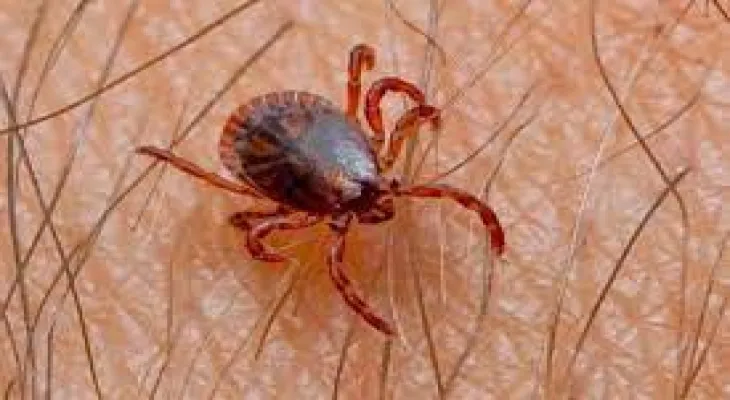Search here
Newspaper
Search here

Arab Canada News
News

Published: July 3, 2023
Ontario's Chief Medical Officer expects to see an increase in the number of cases of three types of tick-borne diseases in the province, in addition to Lyme disease, which he says is directly linked to climate change.
The new regulation is expected to take effect at the end of this week, requiring healthcare providers in Ontario to report cases of anaplasmosis, babesiosis, and Powassan virus to local health officials.
Chief Medical Officer of Health Dr. Kieran Moore said, "There have been reports and stories about these three diseases found in Ontario in recent years, but the province now needs to start officially tracking them."
Moore added, "We can now count and track when these diseases occur, map them to get a risk map, and inform the public when these diseases become more widespread."
Moore confirmed, "It is entirely expected that we will have a higher number of infections over the next several years because this is a known wave of infections that we have seen migrating to the coast in northeastern North America and we expect it to affect Ontario residents."
Moore said, "Over the past twenty years, there has been an increase in the rate of Lyme disease as ticks, especially black-legged ticks, are able to survive through the winter, noting that the United States has seen waves of anaplasmosis, babesiosis, and Powassan virus infections following Lyme disease cases, and this is expected to be seen in Ontario as well."
Moore continued, "It is simply due to the ability of these ticks, which are now able to survive through the winter and persist and reproduce during their two-year life cycle. We've seen them migrate from the mid-eastern United States and now that wave of migration that we've seen pass through Connecticut and New York, and these diseases are following in the footsteps of Lyme disease and we expect to have more cases of these."
Moore explained, "Anaplasmosis is caused by bacteria that enter the person’s bloodstream through a tick bite, causing fever and chills, and can also suppress the bone marrow and the production of white and red blood cells, as well as platelets."
On the other hand, babesiosis appears similarly to malaria, as the tick transmits parasites inside cells, which enter the person’s red blood cells and rupture them, so people can develop anemia alongside fever and chills.
Most cases of Powassan virus infection are asymptomatic, but some people may experience fever, headache, nausea, vomiting, weakness, or aches and pains. After an acute phase and a prolonged period, the infected person may experience confusion, loss of coordination, difficulty speaking, paralysis, seizures, or coma.
Moore said, "Nearly 50% of people who survive severe illness suffer from long-term health problems such as recurrent headaches, loss of muscle mass and strength, and memory problems."
There is no specific treatment for Powassan virus disease, according to the US Centers for Disease Control and Prevention; rather, patients’ symptoms are treated, and anaplasmosis and babesiosis can be treated with antibiotics if symptoms occur.
To prevent tick bites, people who spend time outdoors are advised to use insect repellent and wear permethrin-treated clothing, and then conduct a daily tick check. Moore said, "Anyone who finds a tick attached to them should see a doctor if they develop a fever within the next month."
Comments